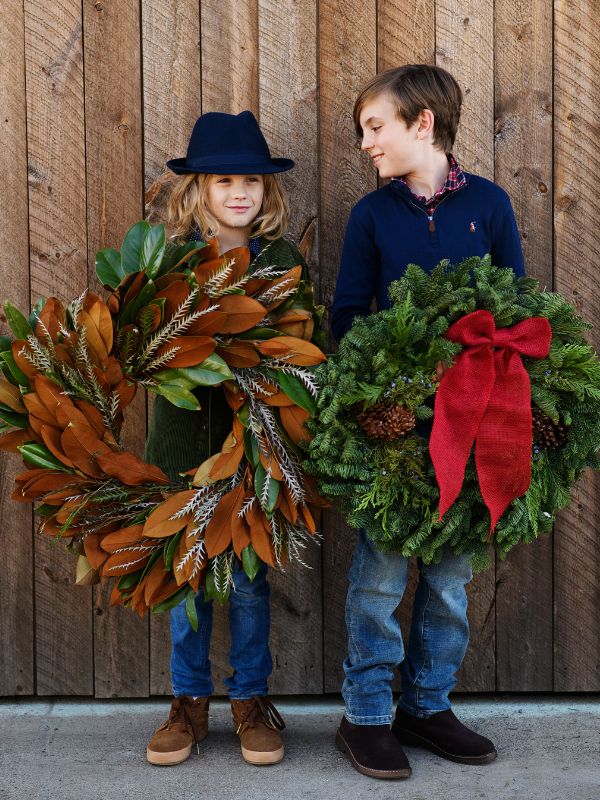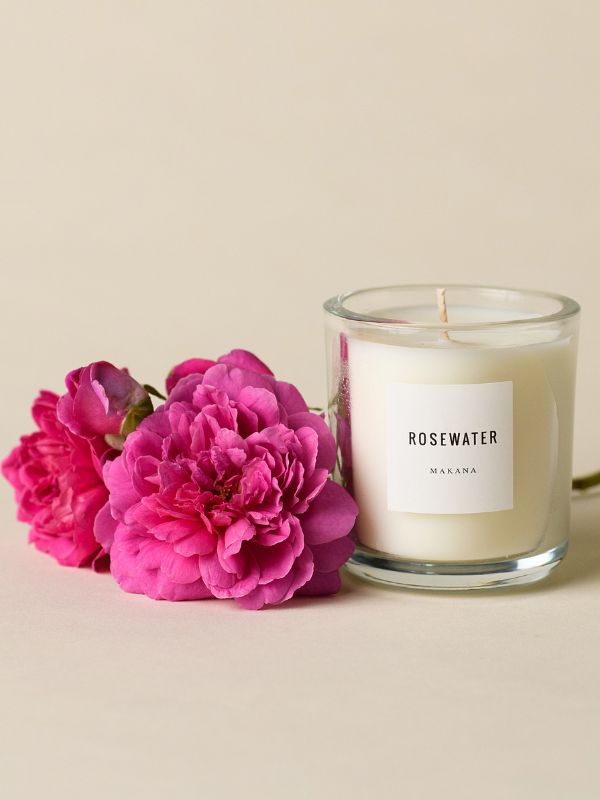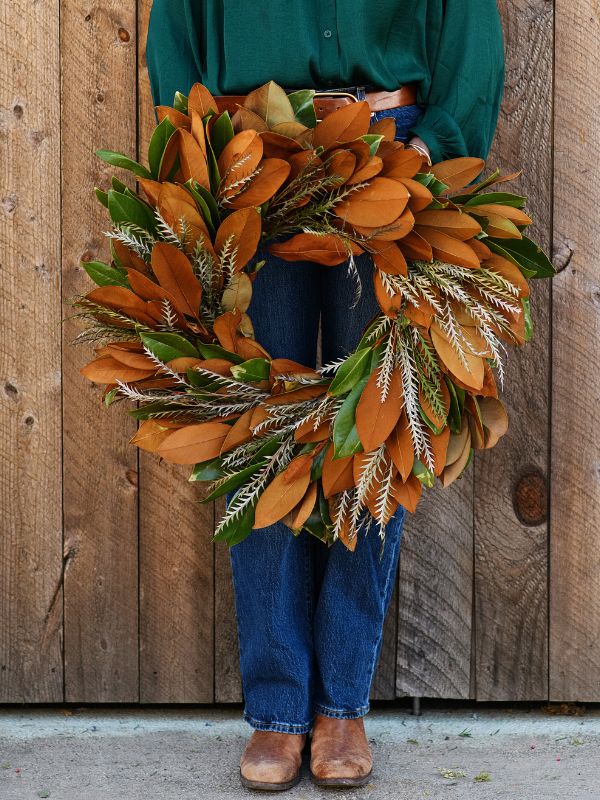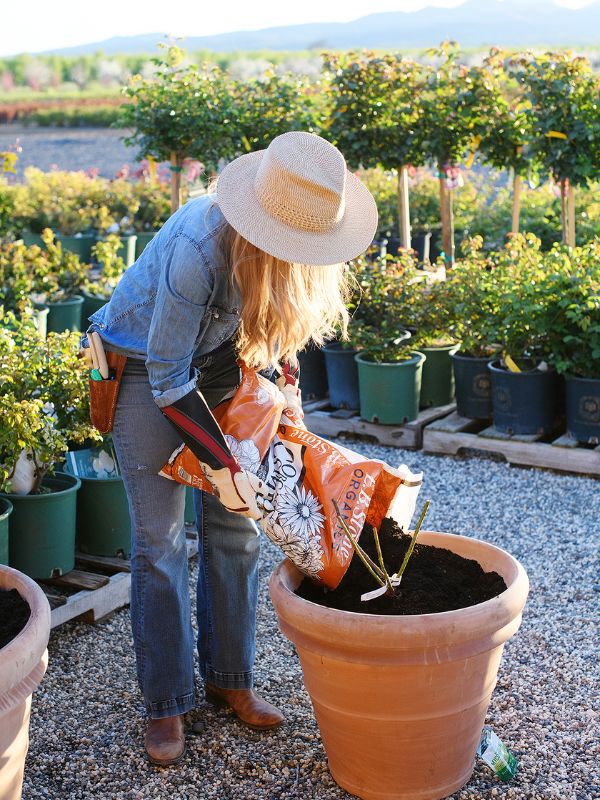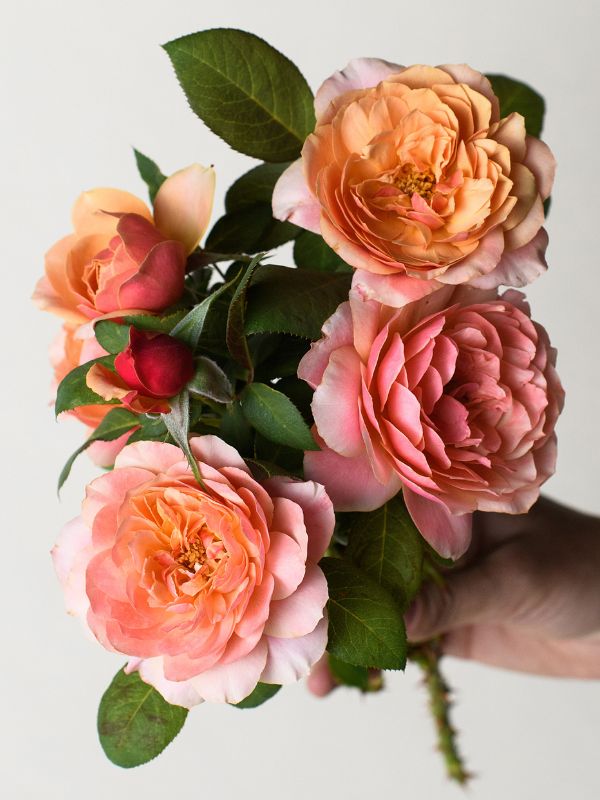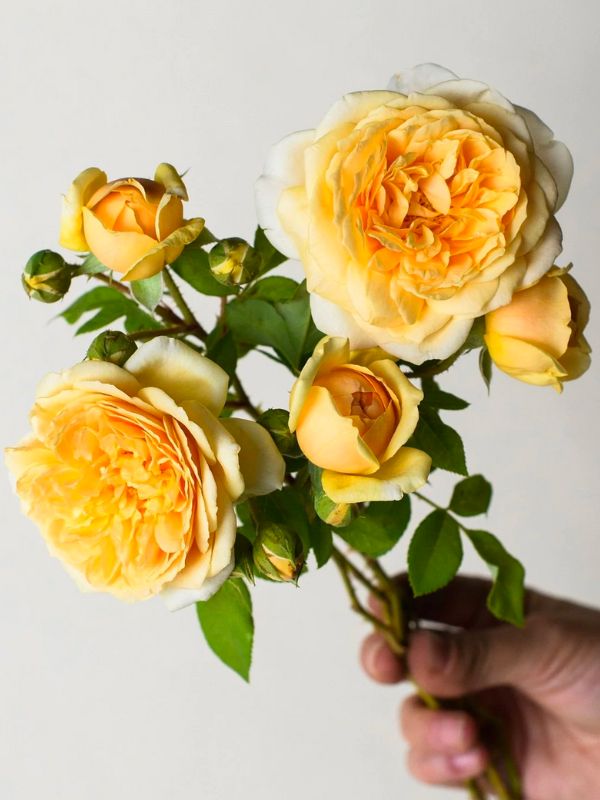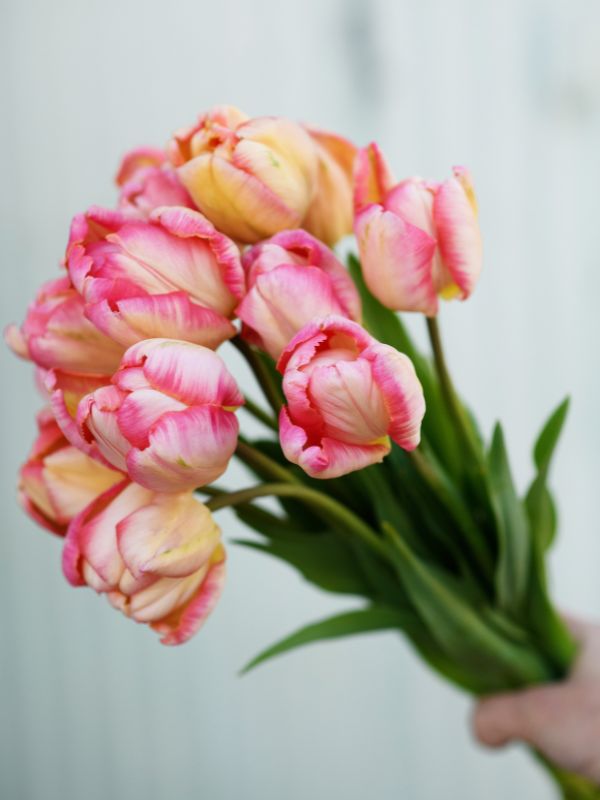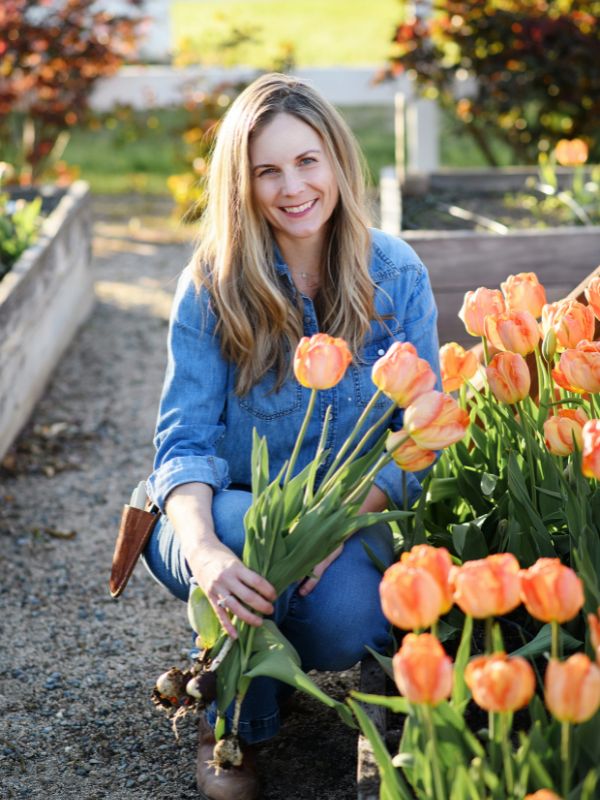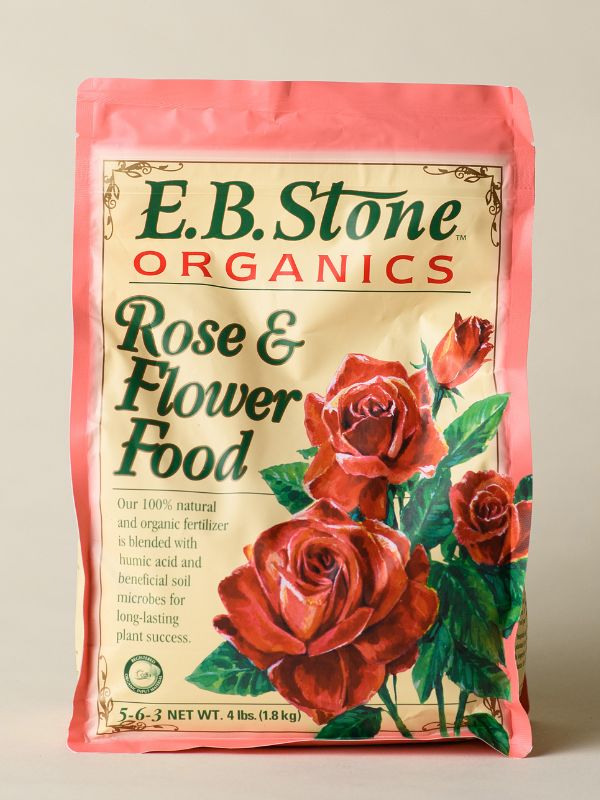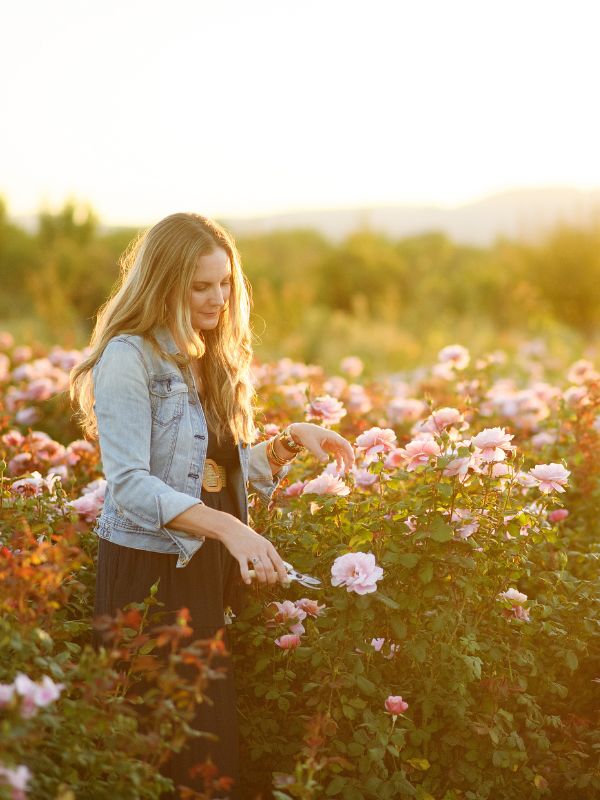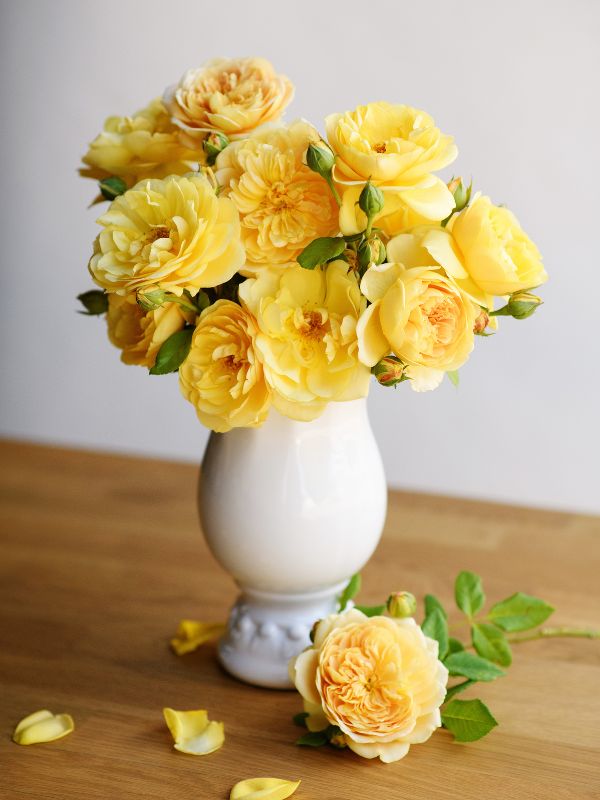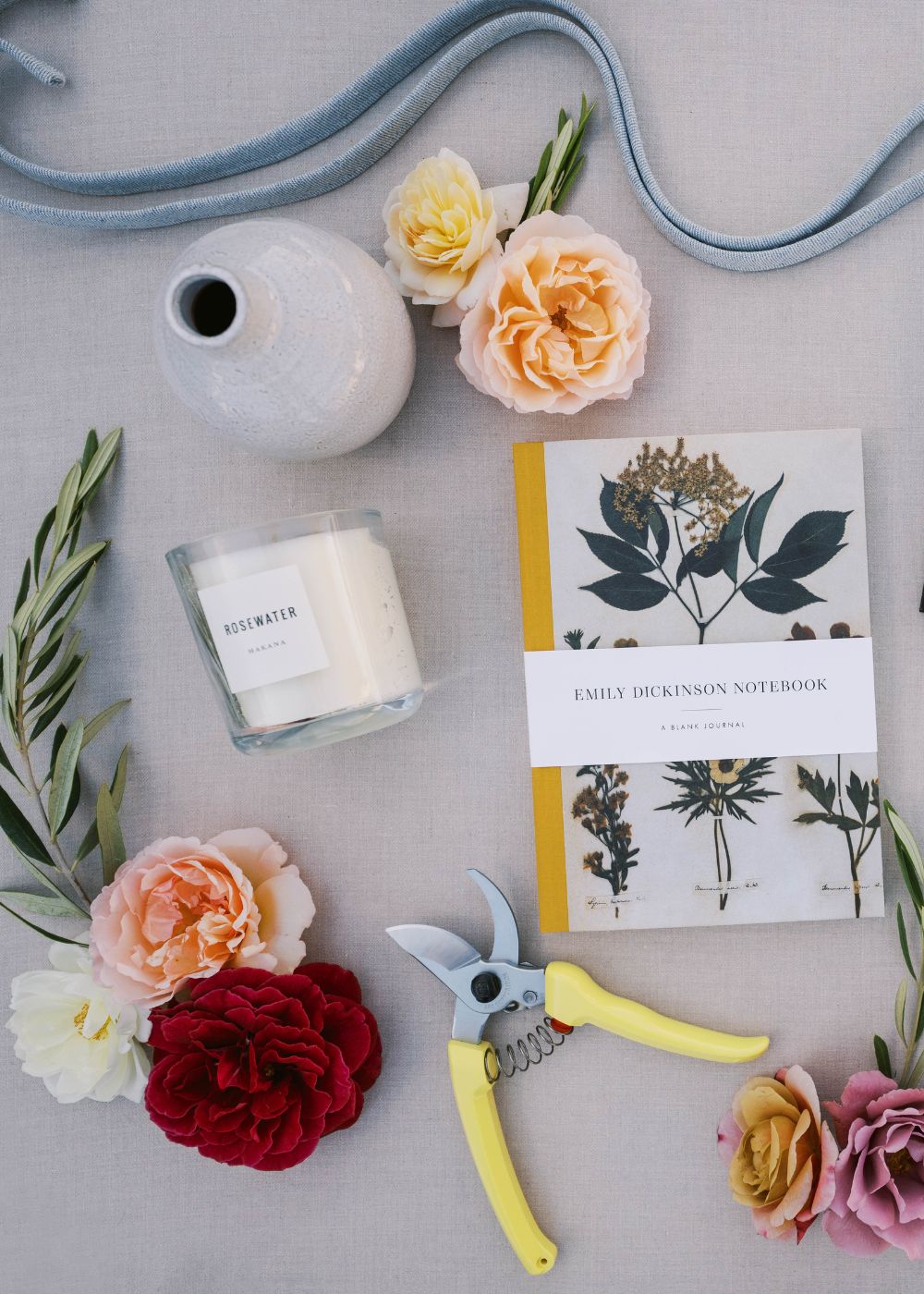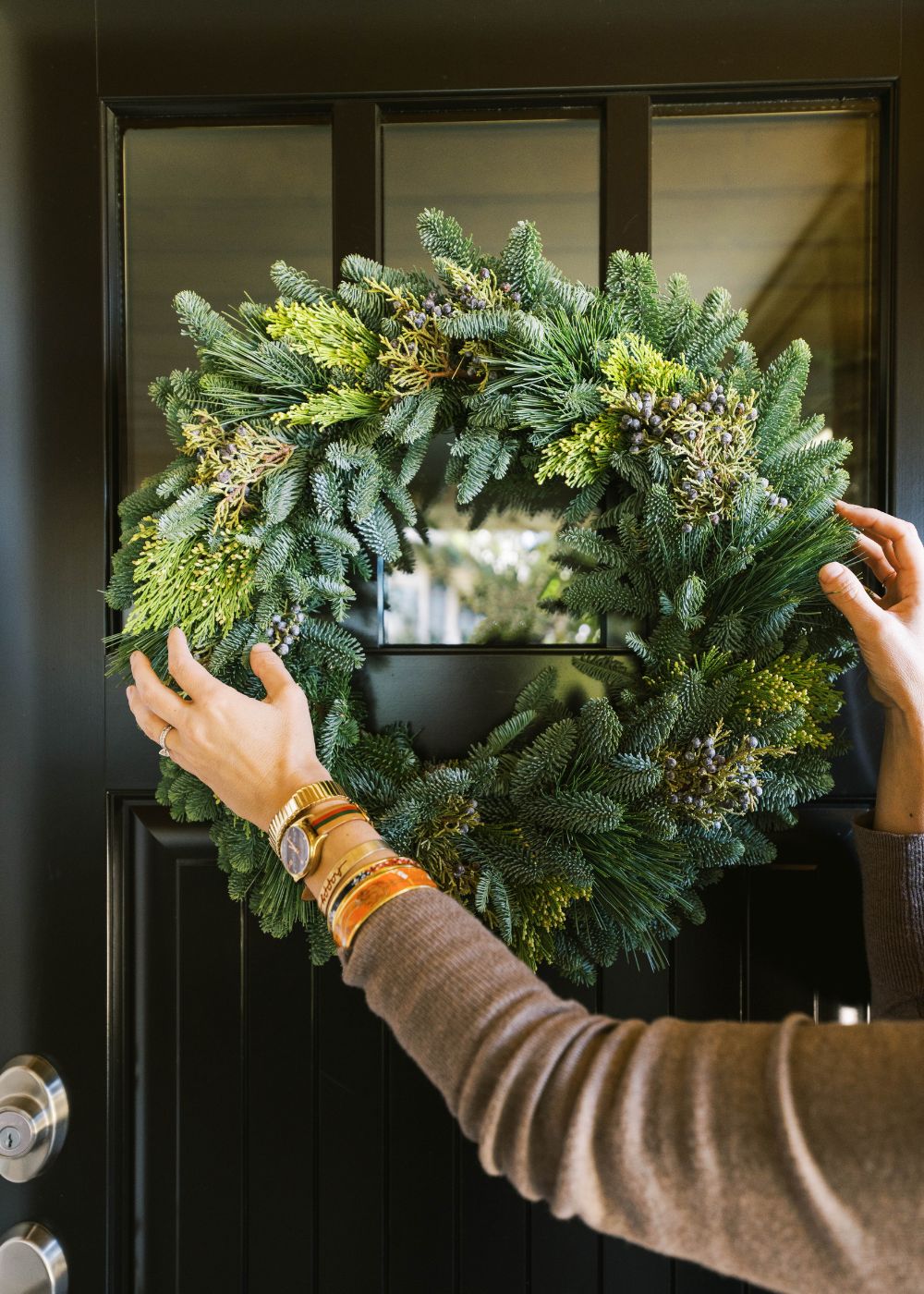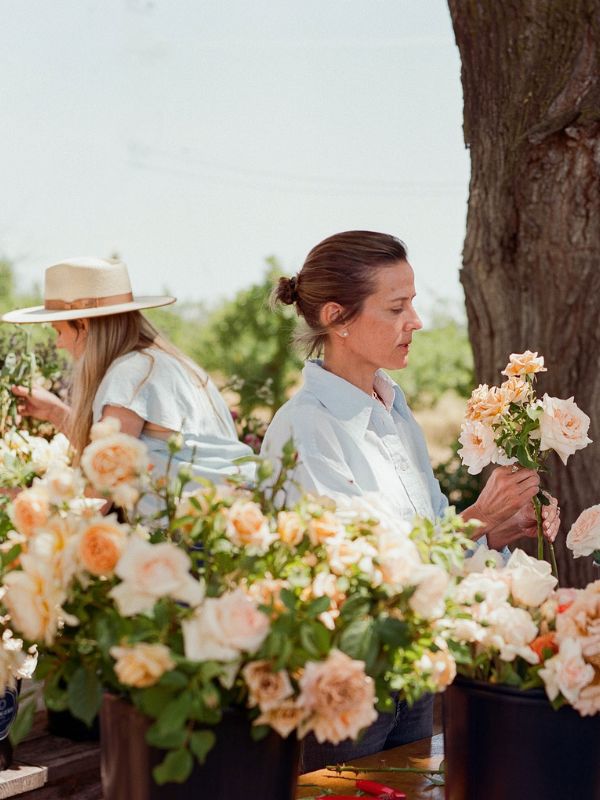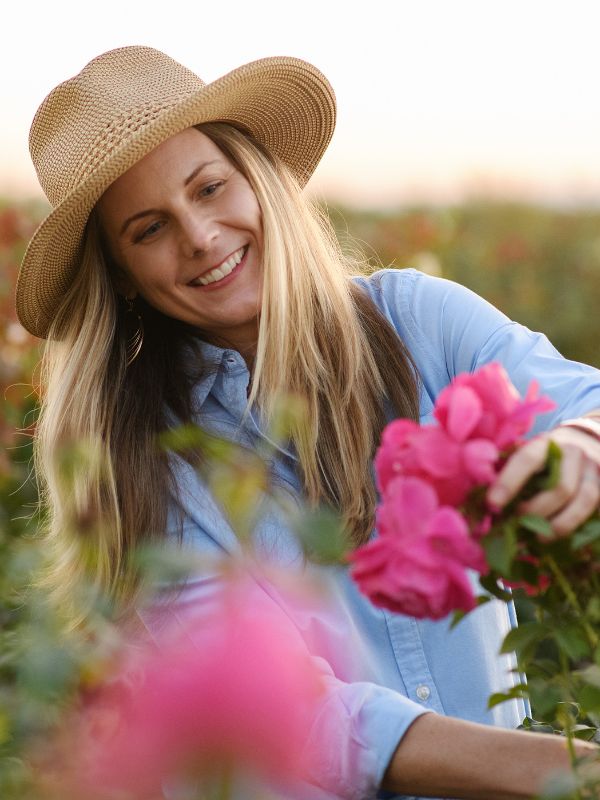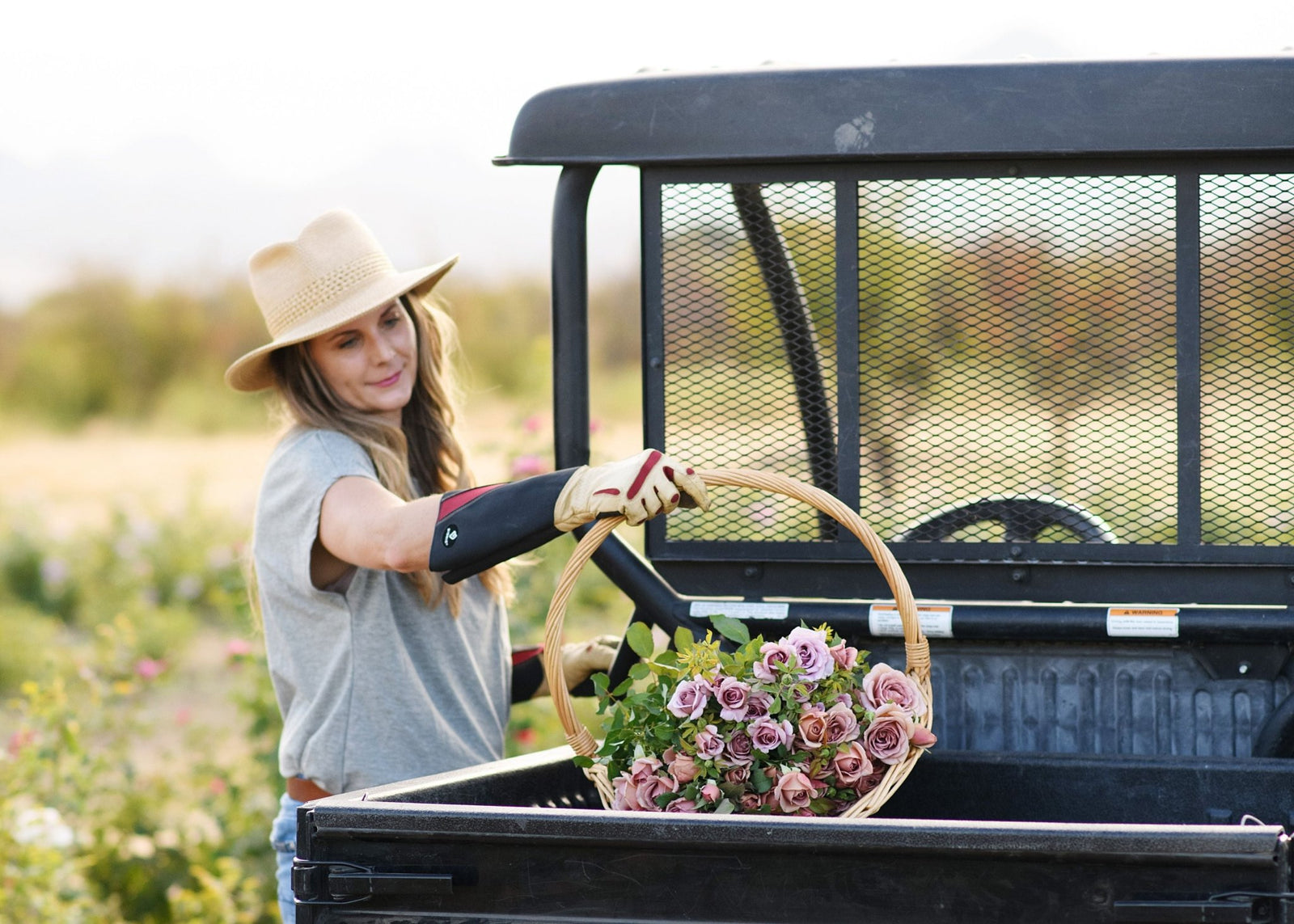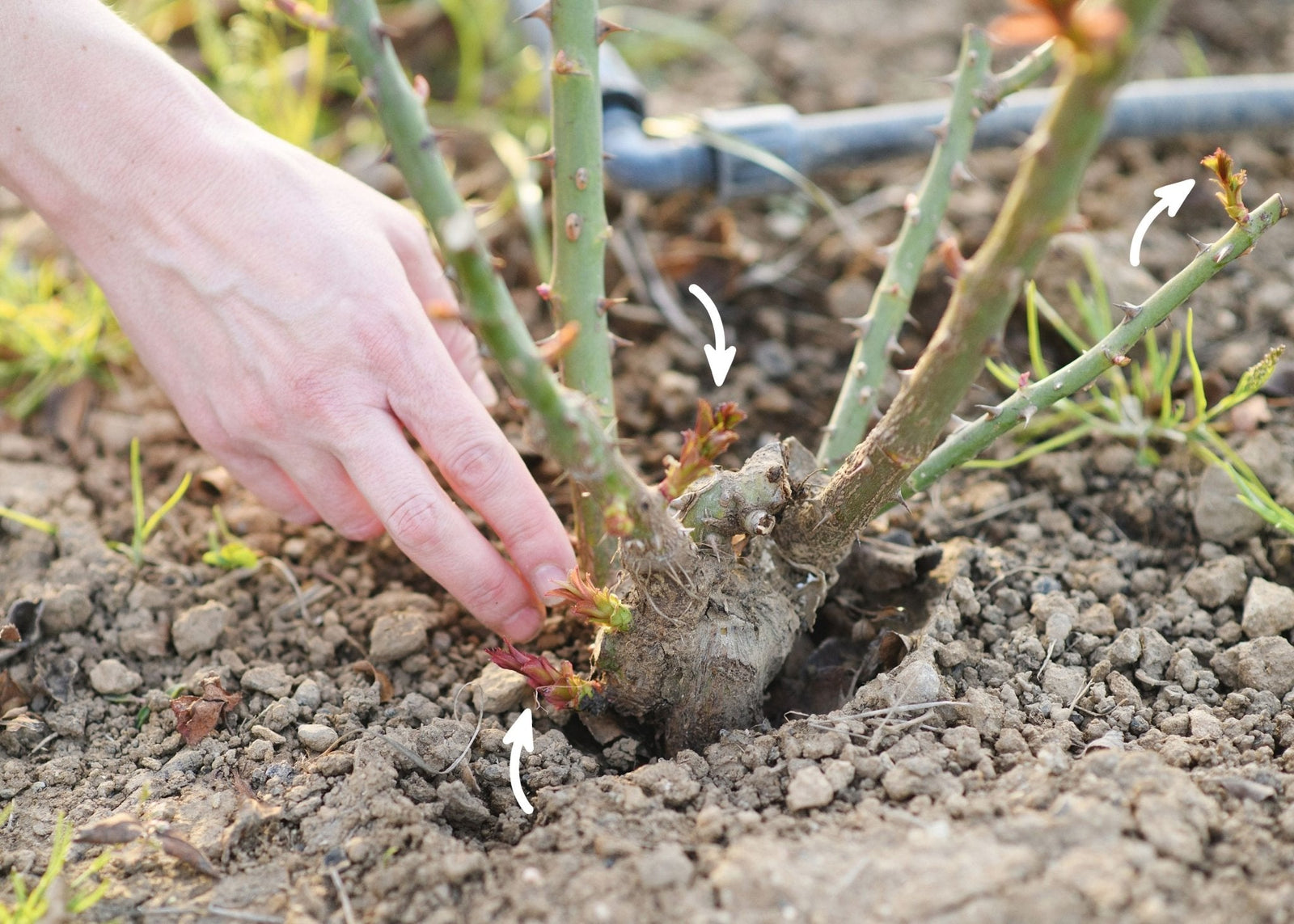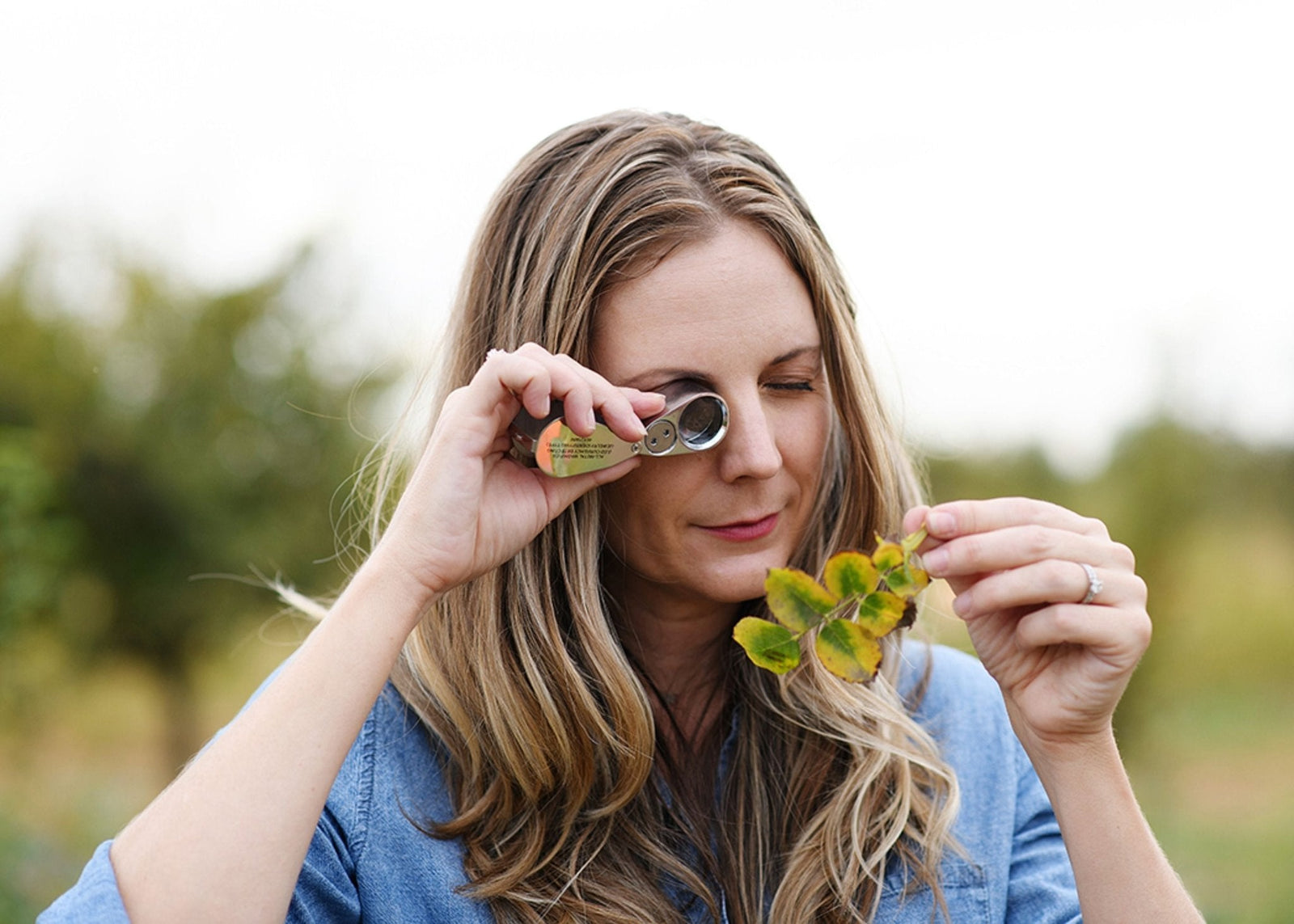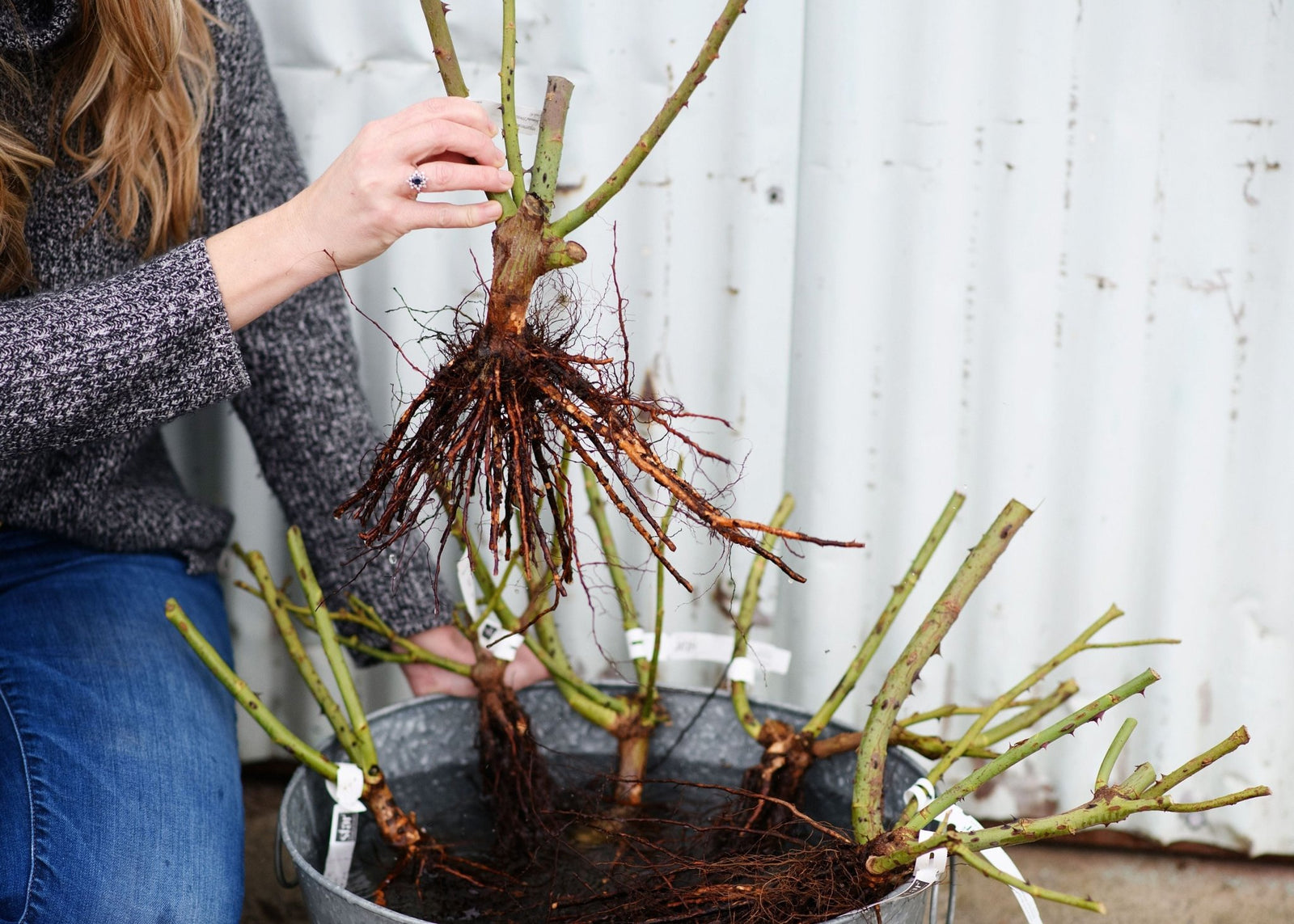
WHAT TOOLS DO I NEED FOR HARVESTING ROSES?
Rose gauntlet glovesFloral Sanitizer, Soap or Bleach
Bypass Clippers
Harvest Basket or Tub
Water bucket, Vase, or other Vessel
Floral Hydrator
Thorn Strippers (if desired)
WHAT IS THE BEST WAY TO SANITIZE BEFORE HARVESTING?
Sanitization is one of the most frequently overlooked steps during rose harvesting and post-harvest care, but arguably it’s the most important. If you start with a dirty vessel—one that most likely contains bacteria and fungi—all of your other post-harvest treatments will be less effective. Studies have shown that a dirty bucket or vase can reduce the vase life of a rose by 20 percent!
To sanitize, clean your vessels, bucket or vase, clippers, floral cooler or refrigerator, tables, countertops, or the processing area with hot, soapy water, a water-bleach mix, or a commercial floral disinfectant. Remember, don’t mix dish soap or other household cleaners with bleach. Some dish soaps and household cleaners may contain ammonia. When ammonia is mixed with bleach, it forms a toxic gas called chloramine that is released into the air, which has the potential to be fatal if inhaled. Be sure to check your product labels carefully when mixing cleaning materials with bleach or don’t get fancy, just stick to a simple water-and-bleach mix for sanitation.
For home gardeners, hot, soapy water or a water-bleach solution will do just fine. For those wanting a more professional clean and want to up their sanitation game, invest in a commercial floral disinfectant like D.C.D from Floralife, or Clean Touch or Professional Cleaner from Chrysal.

HOW DO I PLAN MY HARVEST?
Before you begin the harvest process, keep in mind three variables that affect vase life: the temperature during flower storage from harvest to vase; the stage the flower is cut; and light exposure.
The best time of day to harvest is in the early morning when roses are the most turgid, hydrated from the cool nighttime atmosphere, and ready to pick. Only harvest what you can process (get into water) in a 30-minute period. YES, you can dry harvest. You don’t need to place roses directly into water.
If you need to harvest for longer than 30 minutes, place the roses in a floral cooler, home refrigerator or the coolest, darkest location you can until processing. Do yourself a favor and don’t harvest if the temperature is above 80 degrees F, as it will lead to disappointing vase life. Here at the farm we are harvesting as early as 5:00am in the warm arid summer months and wrap up by 9:00am. In the early spring and late fall we start later after the morning dew has a chance to dry around 8:00am.
The standard length of a commercial cut garden rose is at least 12-inches, so plan to make your cut just above the first fifth-or-greater leaflet and at least 12-inches from the top of the bloom head. If you need a longer stem for a tall vase, then you can cut longer; likewise, cut a shorter stem for a shorter bud vase.

HOW DO I KNOW WHEN A BLOOM IS READY FOR HARVEST?
Don’t focus on the bloom itself and how it’s opening; focus on the sepals and bud stage to tell you when it’s ready to harvest. Harvest when at least three-quarters of the sepals are reflexed and the rose is in tight bud-to-marshmallow stage beginning to unfold. (A sepal is a type of leafy green structure found in many flowering plants, including roses. It's part of the outer layer of the flower and helps to protect and support it, providing stability during pollination. The sepals are typically a triangle shape arranged in pairs or whorls around the base of the petals and can be found in a variety of shapes, sizes, and colors.) Harvesting is a delicate balance. You want the bud with just enough sepals reflected, but not open enough to allow pollinators into the bloom.
Once the bloom is pollinated, it sends a signal to the rose to set seed and begin the reproductive cycle. This signal will tell the rose to start dropping its petals, dramatically decreasing the vase life of the rose. This is why many people don’t have success harvesting their roses and end up with petals scattered all over the dining table. They harvest when the bloom is partially or fully open and likely after an insect has pollinated it.
When placed in a vase, this post-harvest pollinated rose may develop bent-neck or shatter often within hours of picking. Be very careful picking even partially open, or “popped” blooms, as pollinators have a way of sneaking in and out of that mountain of petals without you even seeing them.
So can you harvest when the bud is open? Absolutely! But... the time it will have in the vase will be less. (Truth be told when harvesting for personal use, and not for sale to customers, I prefer to harvest roses with the bloom popped open because the tone/shades are more unique from the natural aging on the plant. It's a trade off I'm willing to take for a few less days in the vase.)
HOW LONG CAN I EXPECT A ROSE TO LAST IN A VASE?
All garden roses will have different vase life depending on variety, type, season harvest, temperature at harvest, hydration at harvest & post harvest care. In general, if you follow the process outlined in this blog, you can expect 3-7 days. Remember to document your harvesting process by variety in your garden journal or take photographs to help you remember whether a rose was harvested too early or at just the right stage, and note how long a bloom lasts in the vase in your post harvesting conditions.


HOW DO I HARVEST A GARDEN ROSE?
STEP ONE: Gather tools for harvesting. Sanitize and clean all tools and the floral-processing area.
STEP TWO: Dry-harvest stems in the early morning, before temperatures reach above 80 degrees F. The cooler the temperature, the better. Harvest stems at 12-inches or greater with three-quarters of the sepals down, and the flower is in tight bud-to-marshmallow stage. Make your cut 1/4 inch about a 5 leaflet set.
STEP THREE: Place stems in basket and transport to cool processing area.
STEP FOUR: Remove all foliage below the water line. No need to remove thorns. (If desired you can remove thorns with a thorn stripper.)

STEP FIVE: Bunch rose stems as desired, and tie with rubber bands. Trim the bottom of the stems.
STEP SIX: Place immediately in vessel with water and floral hydrator. (Click here to see my favorite hydrators.) Follow the directions on the hydrator for water to material ratio.

STEP SEVEN: Chill roses in floral cooler or refrigerator at 34 degrees F for a minimum of four hours with an ideal chill/hydration time of 24 hours. They can stay chilled for up to seven days or more, depending on variety.
STEP EIGHT: Remove roses from cooler to open (bloom) when you are ready to design with them.

Harvesting is the grand crescendo of your adventure of growing cut-garden roses. Follow my method to ensure that your roses have the maximum possible vase life and enjoy the beautiful show!
Photos By: Jill Carmel Photography
This post may contain affiliate links. I make a small commission if you purchase a product from the link. I only recommend products I love and use in hopes they will help you too!

